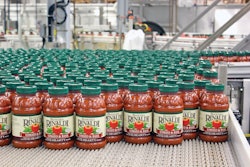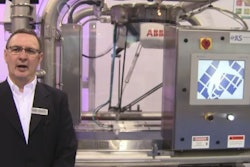In-line cappers will typically have a smaller footprint than a rotary machine. In many cases, an in-line machine can be mounted over an existing section of bottle conveyor. Finally, in-line cappers typically have lower costs for the additional change parts required to run different sizes of containers and closures.
Rotary chuck cappers have much higher speed capabilities than in-line machines. Chuck cappers can be supplied with as many as 40 heads that operate at production speeds from as low as 10 bottles/min to speeds as high as 1,200 bottles/min. (In-line cappers are typically speed-limited to a maximum of 200 bottles/min. In-line cappers are limited in the diameter of cap that can be dependably applied—typically 28 mm to 70 mm. An In-line capper will generally be limited to applying closures that are round in shape. Chuck-style cappers can apply round, rectangular, square, oval, tapered, and reverse-tapered caps.
Chuck-style cappers have an advantage over in-line machines when applying closures with tamper-evident (TE) bands. The TE band typically has an interference fit with the threads on the neck finish of the bottle. Direct pick-off of these caps by the bottle results in the caps sitting crooked on the bottle finish and generates a high number of cocked caps with in-line machines. A chuck-style capper has a TE cap positively held by the jaws of the chuck, and the TE cap is brought down squarely onto the bottle finish and held securely during its entire application, avoiding the incidence of cocked caps. In addition, the capping head on a chuck-style machine can deliver a downward force (top load) onto the closure as it is being applied. Top load helps force the TE band over the thread finish of the bottle neck to properly engage the threads of the cap with the threads of the neck finish.
This article was adapted from a Fowler Products Co. white paper.
Liked this article? Download the entire playbook here.


























